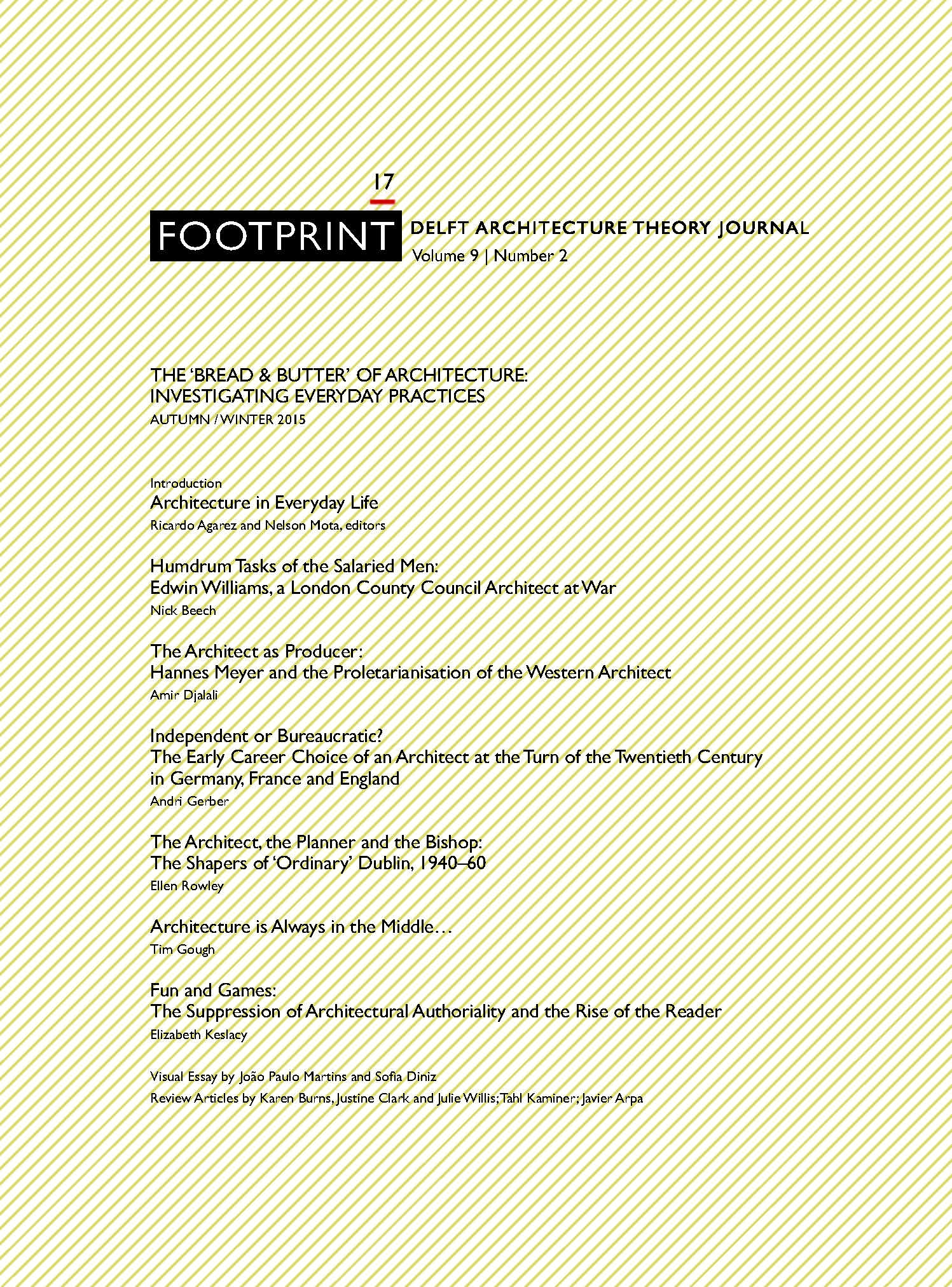Independent or Bureaucratic? The Early Career Choice of an Architect at the Turn of the Twentieth Century in Germany, France and England
DOI:
https://doi.org/10.7480/footprint.9.2.860Abstract
While the general historical perception of the architect conveys an image of him/her as an independent ‘genius-artist’ we should not forget how, in particular around the turn of the twentieth century, architects were primarily employed by communal, or state administrations. The need for architects in administrations was primarily a consequence of the rising independence of cities and the necessity to react to urbanization and property speculation, and later for the mass housing programs in the aftermath of the First World War.
In this paper the professional reality of architects in three countries, Germany, France, and England will be addressed and the relationship of the profession to the administrations will be analyzed. This investigation looks at how architects perceived this relationship and the many advantages it gave them, as well as how their reaction against it was articulated and backed up. In each of these countries architects had a different disciplinary background; these differences will be compared and contrasted. This variance subsequently led to a different perception and attitude towards the relevant administrations. Yet, it ought to be added that no general rule can be extracted from these comparisons, as each architect had their own, unique career path.
Downloads
Published
Issue
Section
License
- Authors retain copyright and grant the journal right of first publication with the work simultaneously licensed under a Creative Commons Attribution License that allows others to share the work with an acknowledgement of the work's authorship and initial publication in this journal.
- Authors are able to enter into separate, additional contractual arrangements for the non-exclusive distribution of the journal's published version of the work (e.g., post it to an institutional repository or publish it in a book), with an acknowledgement of its initial publication in this journal.



